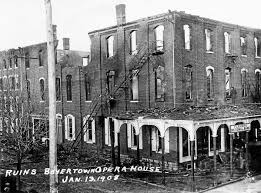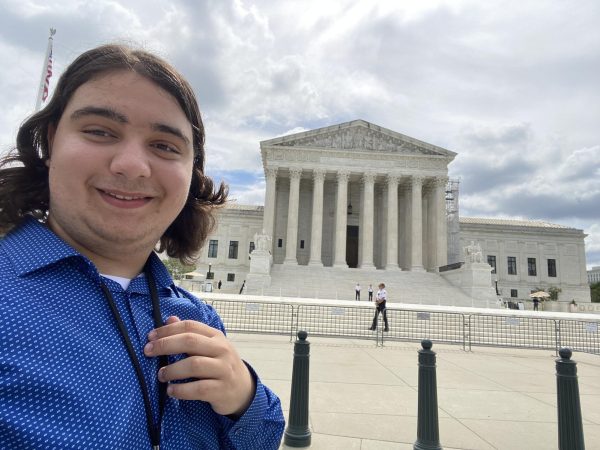112 years since Boyertown’s Rhoads Opera House fire

January 13, 2020 marked the 112th anniversary of the event that changed the face of Boyertown, and the rest of the world forever. Even though the majority of Boyertown residents have heard the cautionary tale of the Rhoads Opera House Fire, few know the gruesome details of the fiery wreck, or the aftermath the tragedy.
For those who may not be familiar with the incident, on January 13, 1908, over 300 people and 60 actors gathered in the Opera House for a performance of “The Scottish Reformation.” A projectionist for the play named Harry Fisher accidentally turned a valve of the projector which released a hissing noise. Many in the theater heard this and became alarmed. In the commotion, a kerosene lamp was turned over, starting a small fire, but was put out shortly after igniting. In an attempt to prevent this from occurring again, a few men lifted a large kerosene tank nearby, intending to move it out of harm’s way. The tank broke and an enormous fire started immediately, leading to the downfall of the Rhoads Opera House.
Although the main cause of mortality that night was the fire, many others were trampled to death in the hysteria. As quoted by a survivor in the book The Boyertown of Editor Chalres Spatz, “Little Children cried and screamed and women became hysterical. Fathers and mothers caught up there little ones in terror. Sweethearts flew to their escorts for rescue. All joined in the mad dash from the building. A few men tried to make their voices heard avert the impending calamity, but to no avail.” Escape was nearly impossible: exits of the theater caused a massive problem, as the doors opened inward and the crowd of people at the entrance could not get the doors to open. Not to mention the fire escapes in the building were obscure and of no use to the frantic hoards of citizens trying to escape their impending death. A handful of people managed to find the fire escapes, but this discovery backfired as those trying to free themselves from the inferno in a rush ended up tumbling down the stairs to their deaths. Firefighters on site recalled seeing bodies piled “6 feet deep” on the fire escapes. 170 people in attendance (⅔ of which were women and children) as well as one firefighter died in the blaze, and countless others across the country felt the burden at the immense loss of life in the quiet area of Boyertown.
Following the disaster, thousands of people flocked to Boyertown to attend the many funerals for the deceased. Makeshift morgues were set up around town to handle the influx of bodies, and lines of people would gather to search the mortuaries for their loved ones who passed in the fire. 25 of the bodies were burned beyond recognition and buried in the Fairview Cemetery to honor the unknown. Numerous other victims are also buried in this cemetery with grand gravestones as a tribute to the fallen.
The Rhoads Opera House fire is still relevant 112 years later as the incident compelled Pennsylvania legislation to require new standards for construction including the mandate that all doors are required to open outward. In addition to inciting monumental legislation, the fire has also inspired lingering stories of ghost sightings including a tale involving a specific ghost who lurks around Durango’s, a restaurant in Boyertown.
Boyertown will never forget the lives lost in this tragedy. The Rhoads Opera House fire will live on as one of the most tragic events in Boyertown, shaping the future of the town and world.


















Carl • Jul 25, 2020 at 11:47 pm
What of the theater is left if any, was it rebuilt as a theater or the area used for something else
Jason Moyer • Jan 17, 2020 at 5:45 pm
Bonus points for the authors: Why is the death toll on the plaque at the Opera House listed as 171 instead of 170?
Keeley Malloy • Jan 24, 2020 at 12:27 pm
While 170 theater goers died in the blaze, only one firefighter lost his life, making the total dead 171. Thanks for asking!
Joshua Sanders • Nov 30, 2020 at 11:05 am
I had thought the firefighter had died due to the hose cart crushing him when it was crashed